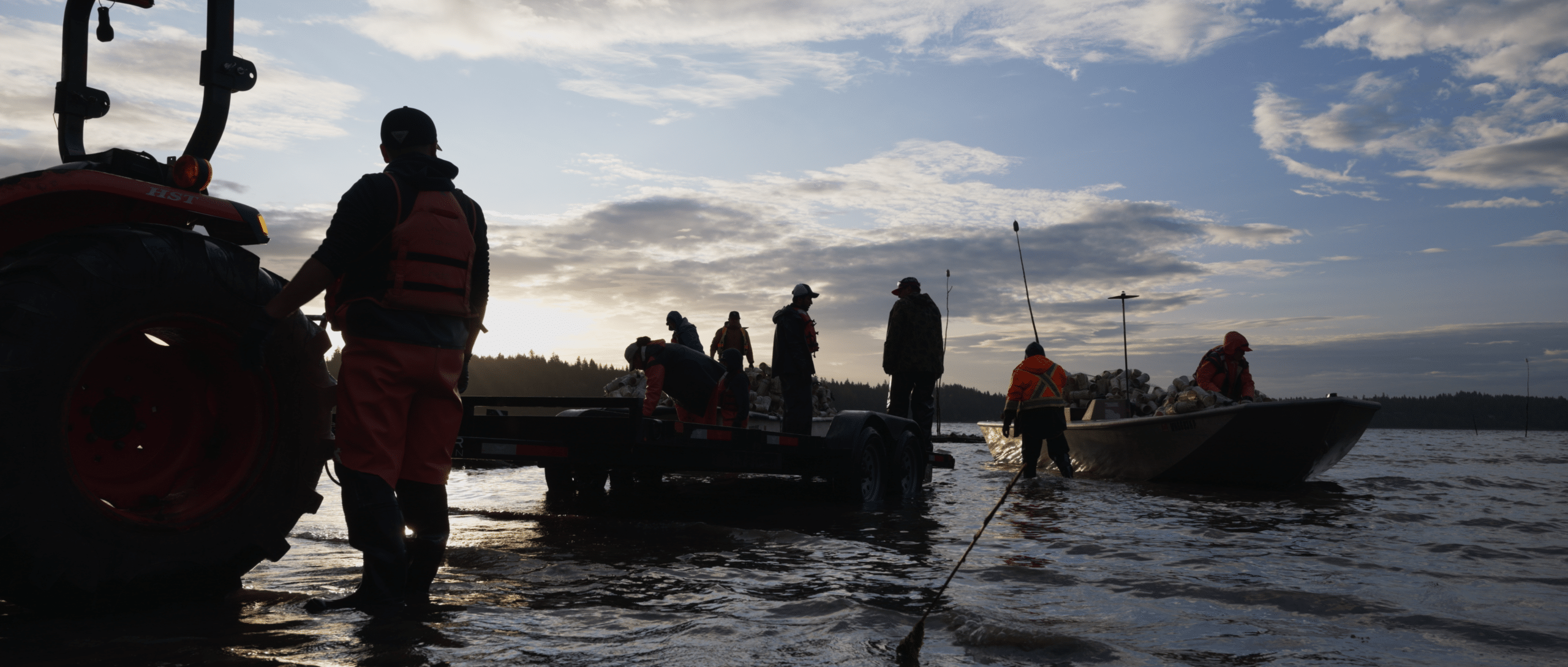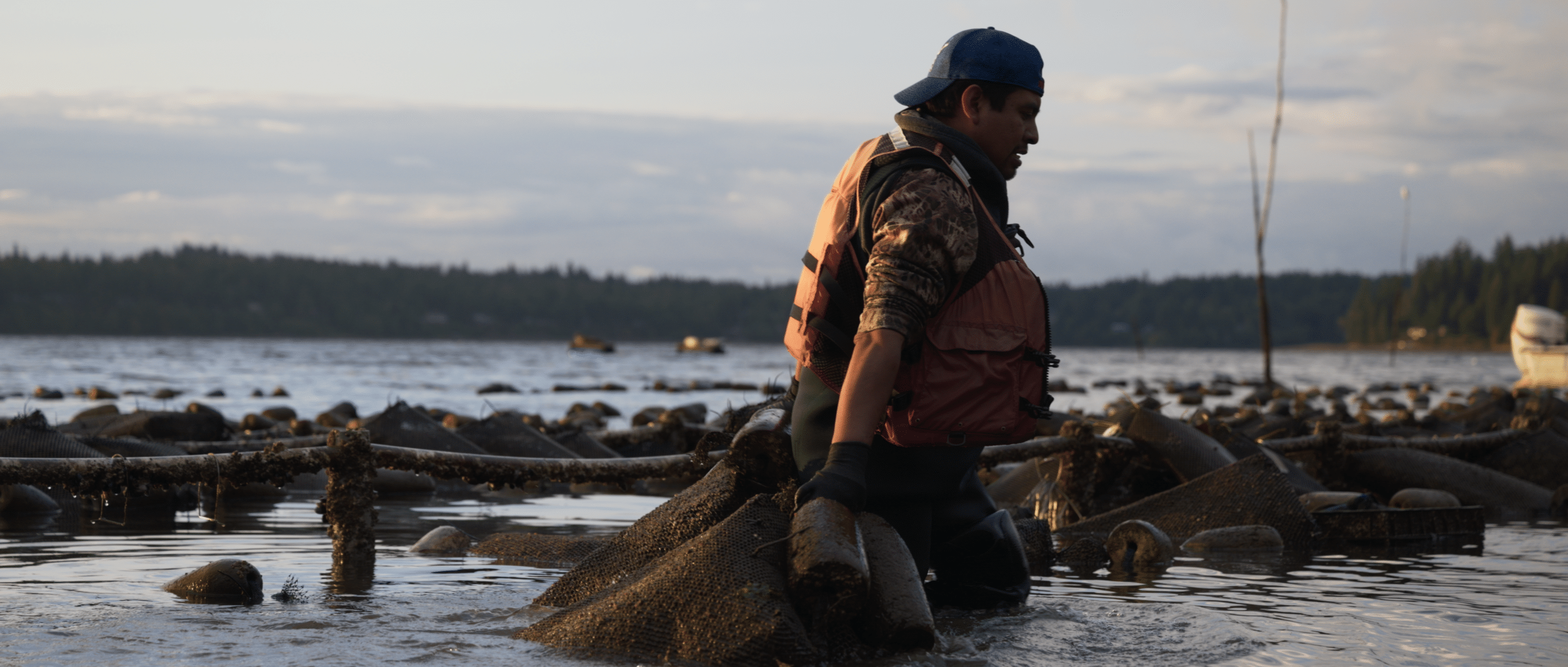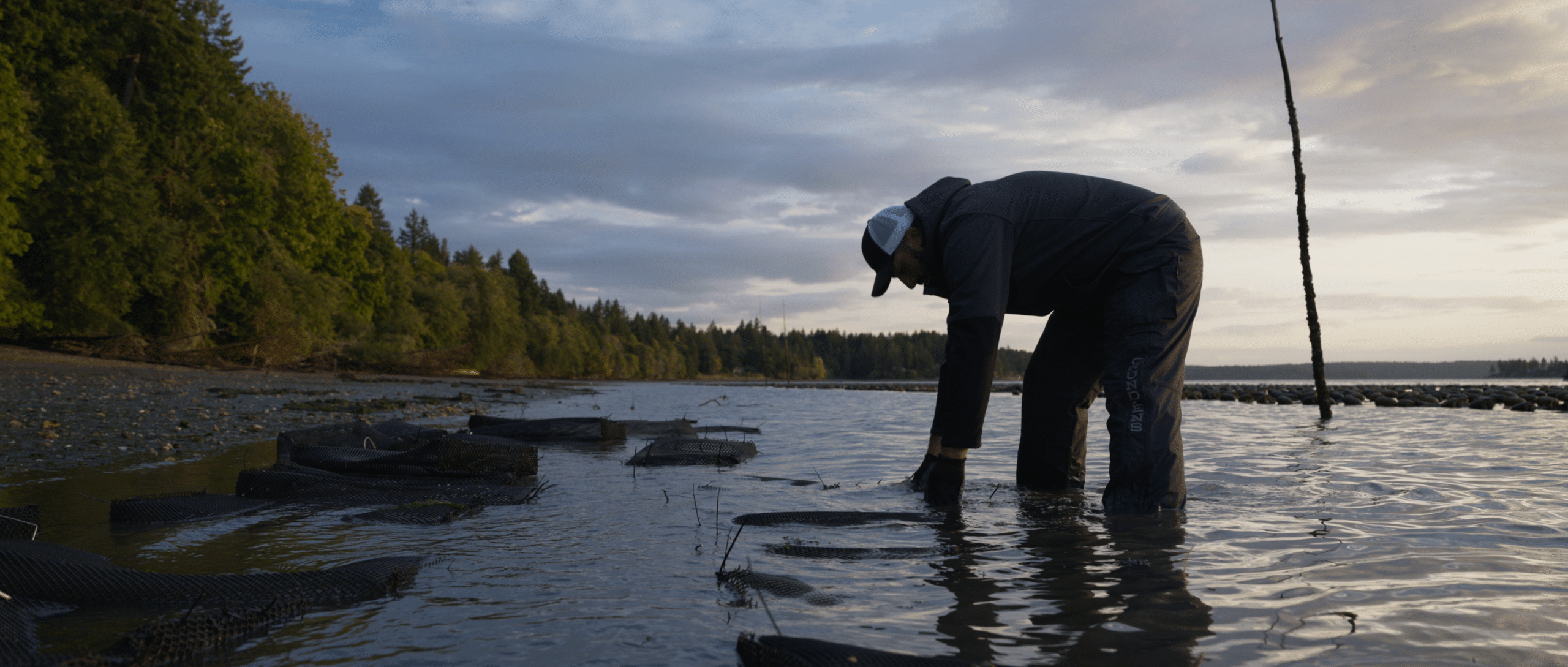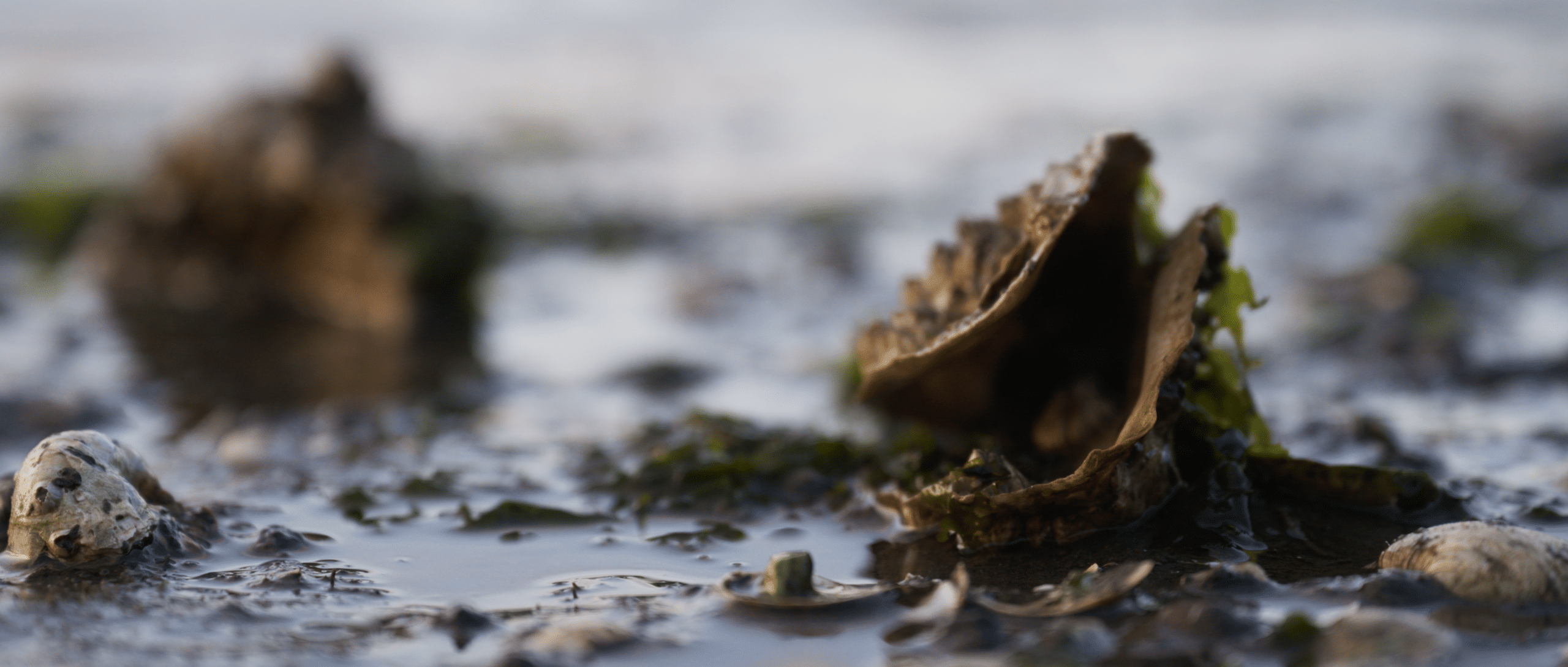Chelsea Farms Manager Theo Walker introduces the world of shellfish farming—from the challenges of working on the water to the intricate process of nurturing oysters from seed to plate—and tells us about the unique role that Washington State’s oysters play in our region’s maritime heritage.
Can you tell me your name and your job title?
My name is Theo Walker, and I’m a Farm Manager for Chelsea Farms. Chelsea Farms is a family shellfish company that started in 1987. They started just doing oysters and clams, and they started the geoduck portion of it in the 90s. Now, we employ about 15 people on the farm, and they’ve opened up a restaurant in Olympia.
What were you doing before joining Chelsea Farms?
I worked for the Department of Natural Resources. I was a wildland firefighter for a summer, but that job ended in September, and Chelsea Farms had an opening. I didn’t think I was going to stay here, but I love being outdoors and working outside. I like the farming aspect of it: taking something small and growing it out for people to consume. So that’s what’s kept me here.
Can you tell me a bit about the life of an oyster from the seed to the plate?
When we buy oysters, we buy them at a very small size, about two millimeter. Those oysters come from a hatchery where they actually breed the oysters and make larvae. The hatchery grows them up to about that two-millimeter size.
Then we get them. We put them in a floating upwelling system (FLUPSY), which is just a nursery system for little oysters. They’ll start growing in March, and they grow really fast for about six months. We house them in the FLUPSY for about two to three months, until they’re about a three-quarter inch in size. Then we outplant them onto our oyster beds at the farm.
From that point, they take about nine months on average to reach market size. That is when we harvest them and sell them to the restaurant.
You talked about oyster growing and harvest season being mostly during the fall through winter. What is that like working on an oyster farm during that season?
During the winter months, you’re working at night in the dark with headlamps. It’s raining, it’s windy, it’s cold, it’s nasty. But that’s the time to harvest all your oysters; that’s time to do what you need to do on the beaches. The summer months are more for planting—when it’s nice outside and things are growing.



What has working on the water taught you?
Boat navigation would be one of them. I didn’t grow up being on the water, but it really taught me all the different waterways we have here in Washington. When you start looking at it, the South Puget Sound is a big area. It’s fun to boat around and see the different parts of it.
What traits make a good shellfish farmer?
You gotta like to work outside and in all weather conditions. Be a hard worker. Enjoy what you’re doing. Like I said, you’re raising food basically; you’ve got to have a passion for it to love what you do.
What kinds of changes have you seen with Chelsea?
We’ve grown since I started here 14 years ago. We’ve planted more oysters and clams and geoducks. We’ve had more outreach to the public about shellfish farming in general. We want them to know that shellfish farming is good for the area, that the shellfish filter water and help the ecosystem. That’s been a big change.
What makes Washington State’s shellfish unique?
For the most part, an oyster is kind of an oyster no matter where you eat it. But Washington is unique in that—besides the East Coast—the oysters have been here for as long as people have. We’ve just adapted to the commercial harvesting of oysters.
Can you tell me a bit about the difference between the Pacific Oyster and the Olympia Oyster?
The Olympia Oyster is the native oyster to the South Puget Sound. Those got over-harvested back in the late 1800s or early 1900s. The Pacific Oyster actually comes over from Japan. They’ve adapted to the water [of the Pacific Ocean] and that’s what works for a commercial harvest.
We are trying to rebuild the Olympia Oyster. We’re trying to plant the Olympia Oysters as [much as] we can, and get the word out that they are the native species to this area. The more people eat, the more we can grow. And that’s a good thing: if we’re not able to sell the Olympias for people to consume, then that makes it hard budget-wise to buy them and replant them.



Are there any challenges or threats to Washington State’s shellfish farms?
Pollution is a big one, obviously. Harmful algae blooms would be another one; if there’s a harmful algae in the water and they eat it, the oysters will die. Weather plays a factor: too much heat is bad for the oysters.
How do you see shellfish farms changing going forward into the future?
I think people are keeping the same practices, but they are trying different methods. There’s always some new way to do something—maybe this growing method doesn’t work like it did ten years ago, and now we need to try something different. The waterways are always changing, the beaches are always changing, so you have to adapt to that. That’s what I can see the future: adapt to what nature throws at you.
The Pacific Shellfish Institute has some oysters out here that they’re testing for survivability. They’re a company that is trying to track which oysters are dying because of the heat and the weather changes. People are thinking about how to grow a more resilient oyster.
Why do you think it is important to preserve and maintain Washington State’s shellfish farms?
Shellfish are filter feeders; they help filter the water. Without oyster beds and oyster reefs, the water quality would probably be much worse off if we did not have the farms. There’s always been oysters and shellfish in Washington State, so we want to keep that going.
If you liked this interview, check out our other “This Is Maritime Washington” videos.
To learn more about Chelsea Farms, please visit their website where you can find information about the farm and the restaurant.







